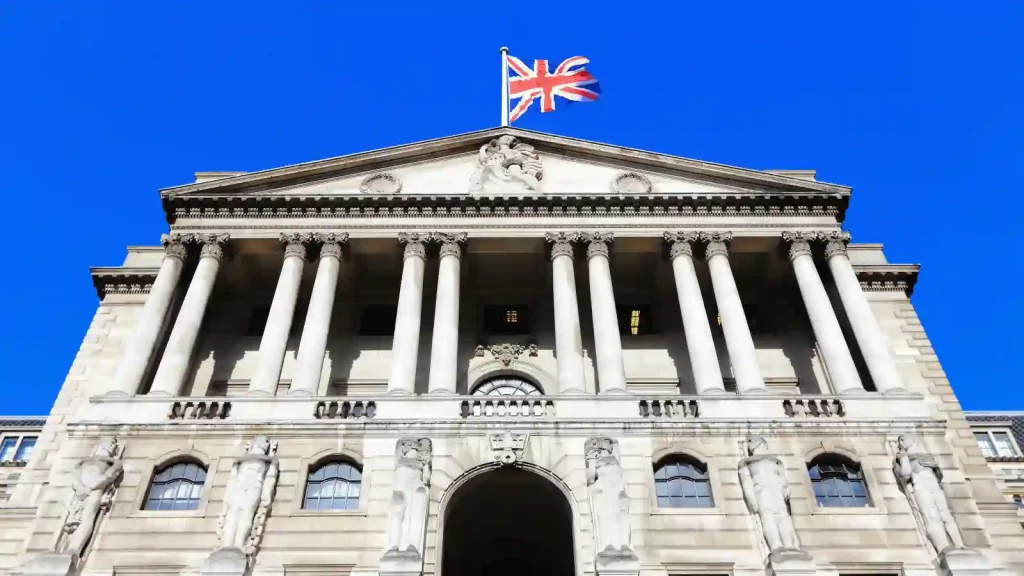The Bank of England surged its primary interest rate as a fragment of a measure package to curb inflation trailing to the top 7%, as policymakers came within a hairsbreadth of bringing an unparalleled 50-basis point surge.
Five of the bank’s nine policymakers underpin the surge to 0.5% from 0.25%. In a surprise move, four voted for an increased hike, to 0.75%, a wave not witnessed since the bank begot independence in 1997. Expectations for added modest tightening is inevitable in the coming months.
Officials also pointed to the beginning of a new-fangled era for the GBP 895 billion (USD 1,215.39 billion) of bond holdings accumulated over the past ten years under quantitative easing. Accordingly, they universally voted to commence the procedure of inhibiting the balance sheet.
The Bank of England will instantly refrain from investing the proceeds of expired gilts, allowing over 200 billion pounds to run off by 2025, and declared plans to unburden the complete 20-billion-pound stock of corporate bonds by the dusk of 2023.
Bank of England lifts inflation forecast
Bank of England officials lifted their forecasts for the summit of inflation to 7.25% in April, over triple Bank of England’s 2% target. Earlier estimation of inflation was to surge approximately to 6%.
Bank of England also stated the labour market remains tightknit. They abruptly surged their wage-maturity forecasting, estimating the primary pace will accomplish 4.75% in the coming year. Higher energy rates added further pressure, whilst the cost of living pressures slowed GDP maturity.
Against that framework, four officials – Catherine Mann, Dave Ramsden, Jonathan Haskel, and Michael Saunders – voted to enhance rates by 50 basis points, witnessing the necessity to behave faster to inhibit inflation expectations. The majority, including Governor Andrew Bailey, selected the 25-basis-point surge.
The surge highlights the top back-to-back hike since 2004.
The Bank of England is pioneering the way in a global constriction of fiscal policy as institutions advance to tackle a swift acceleration of rates in the effects of pandemic lockdowns. The United States Federal Reserve is estimated to unbridle its rapid contraction cycle in 2022, and there is speculation that might include a 50-basis-point hike.
Surging living costs
The decision also arrives with the United Kingdom amid a cost-of-living catastrophe, which will nibble harder commencing in April 2022, when higher energy and tax rates hit consumers.
Despite the enhanced outlook for wages, the Bank of England cautioned that real household incomes will recede after regulating for inflation and tax surges in 2022 and 2023.
An hour before the Bank of England’s declaration, Ofgem, the United Kingdom energy regulator, stated the energy bill for a typical household would surge 54% in April 2022.
While the Bank of England acknowledged that the hike could do only so much to address those instant price increases, they stressed it was essential to underpin long-term stability. The UK government is fabricating a multi-billion-pound package of regulations to alleviate the effect of surging energy bills. The measures might also inhibit the momentum of inflation.
Bank of England stated that the acute rise in global energy prices and tradable goods the United Kingdom is an importer would burden real aggregate income and expenditure. The fiscal policy will be unable to prevent this.
The tightening on incomes will steer unemployment up to 5%, from approximately 4% at present. As a result, it will lead to enhanced economic slack by the dusk of the forecast tenure. Nevertheless, the economy is estimated to return to its pre-pandemic level this quarter, with growth recuperating from the pandemic in February and March.
Growth is estimated to decelerate subdued rates, with a slightly weaker outlook than in November due to the cost-of-living predicament’s impact.
The Bank of England forecasts on inflation will reach beyond target in two years and plunge below their aim in three years. However, the estimation rests on interest rates accomplishing 1.5% by the middle of 2023, which suggests that the Bank of England may not go that far.
An alternate scenario, based on energy rates following their future curve, rather than constant after six months, would lead to inflation plunging to approximately 0.75 points below target in 2-3 years.
Since the forecast window was closed, markets have anticipated steeper hikes and are nearing pricing at a level of 1.5% by the dusk of 2022. Hence, the hike rate would infer as a colossal tightening policy since 1997.
The Bank of England also stated it would instantly stop the procedure of reinvesting the proceeds from expired bonds held within its QE program, the foremost step in inhibiting its humongous GBP 895 billion (USD 1,215.39 billion) of holdings.
The UK central bank also stated that it would pause reinvestments of its GBP 20 billion (USD 27.16 billion) corporate bond strategy and fabricate a program for total sales. Hence, the entire stock will unwind towards the dusk of 2023 at the earliest.
